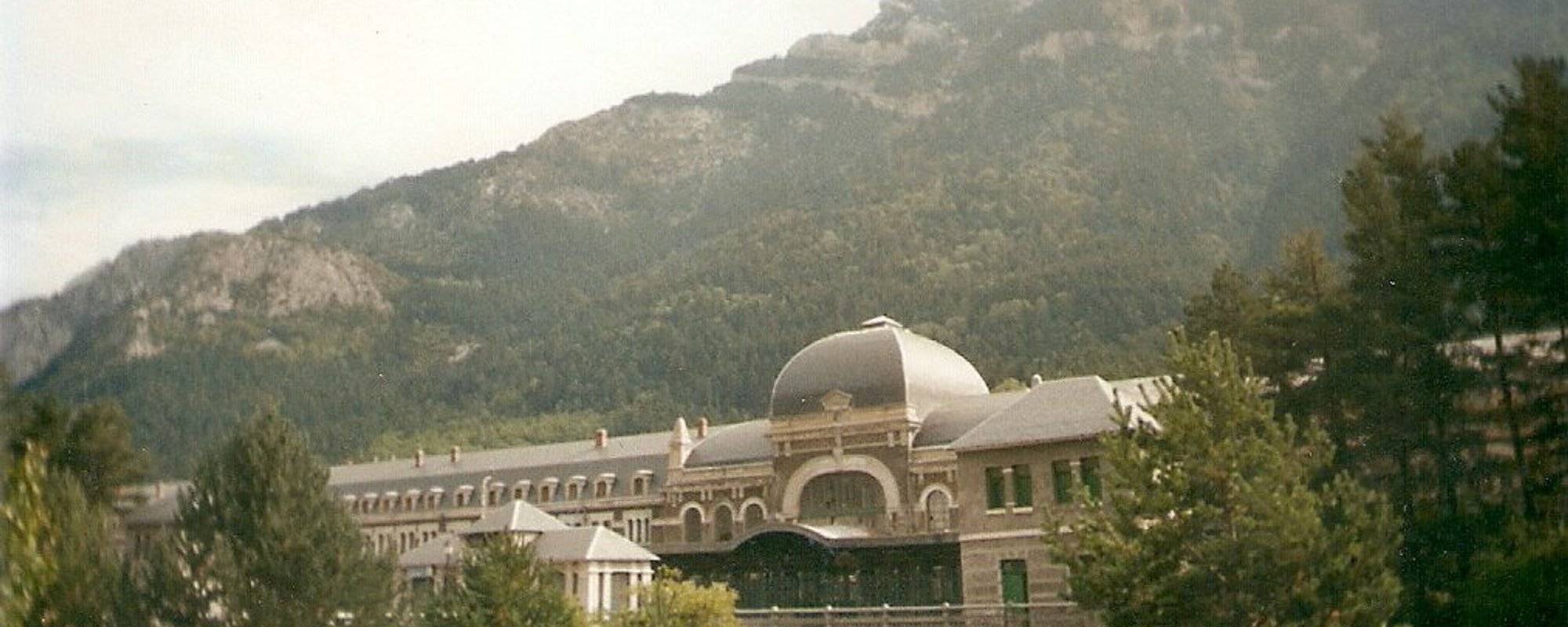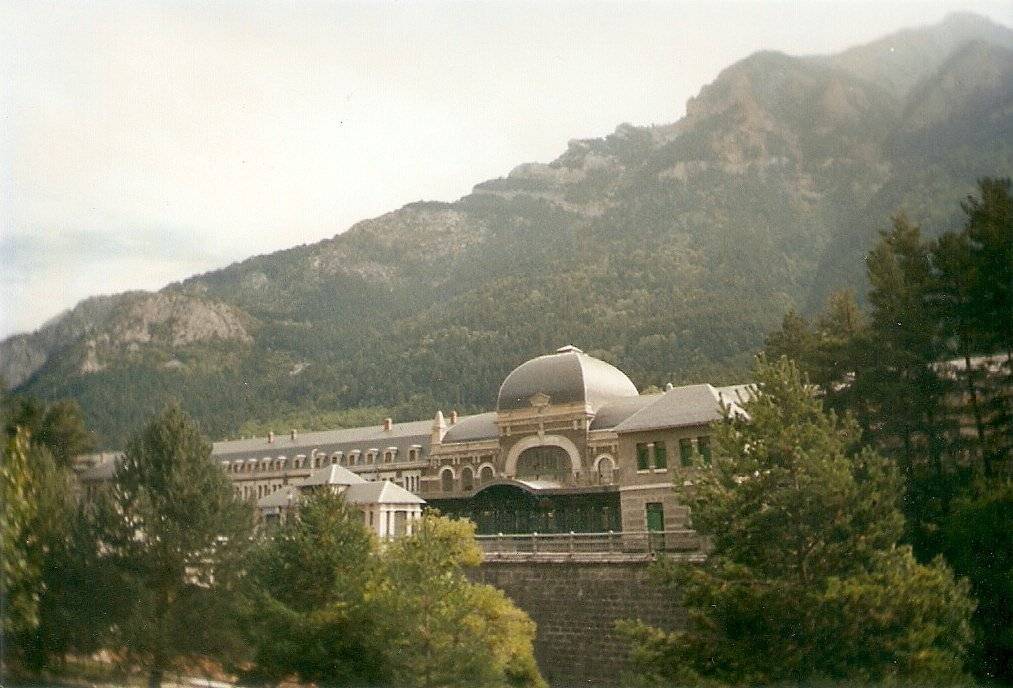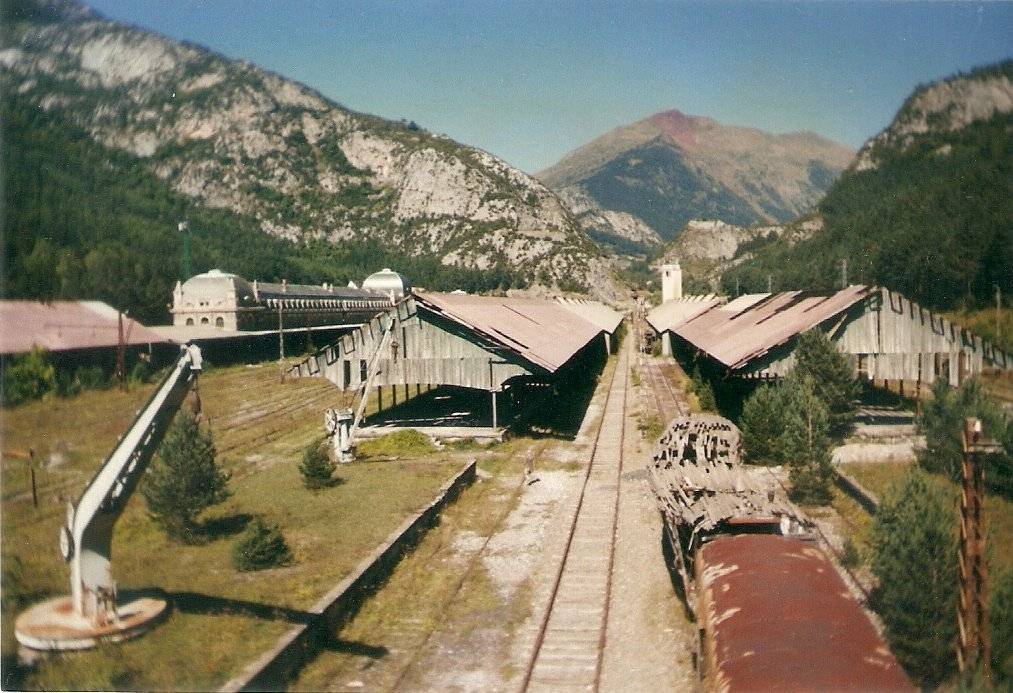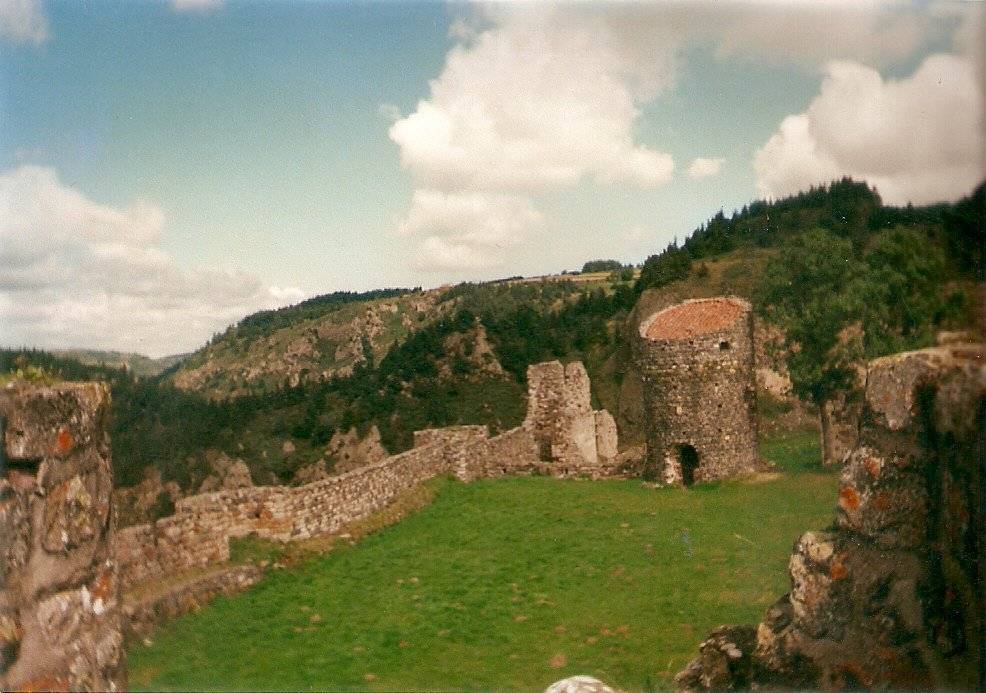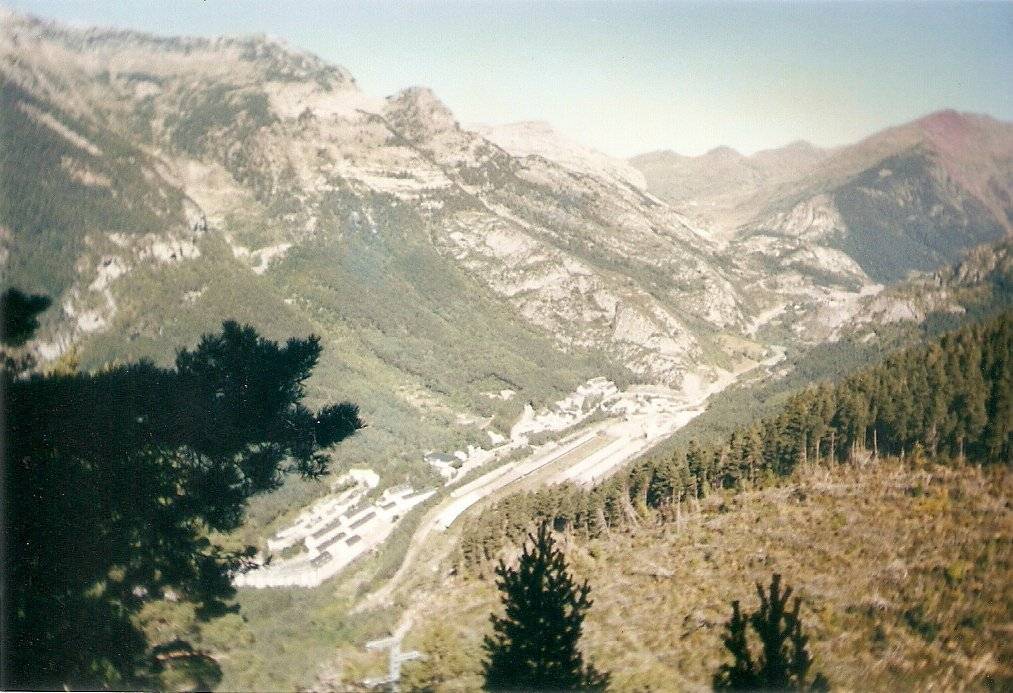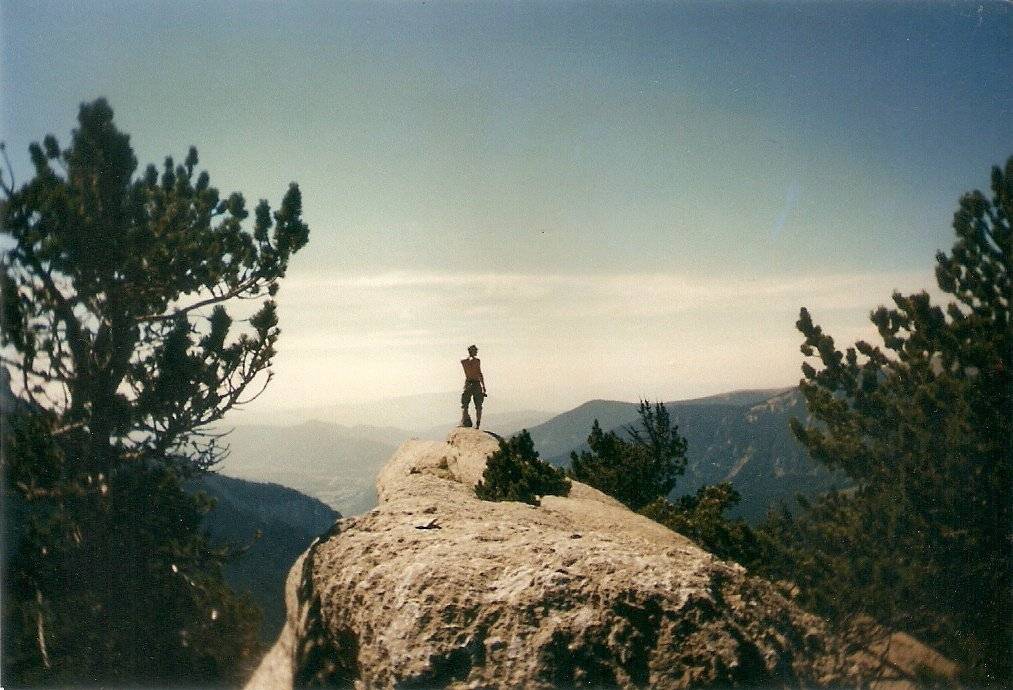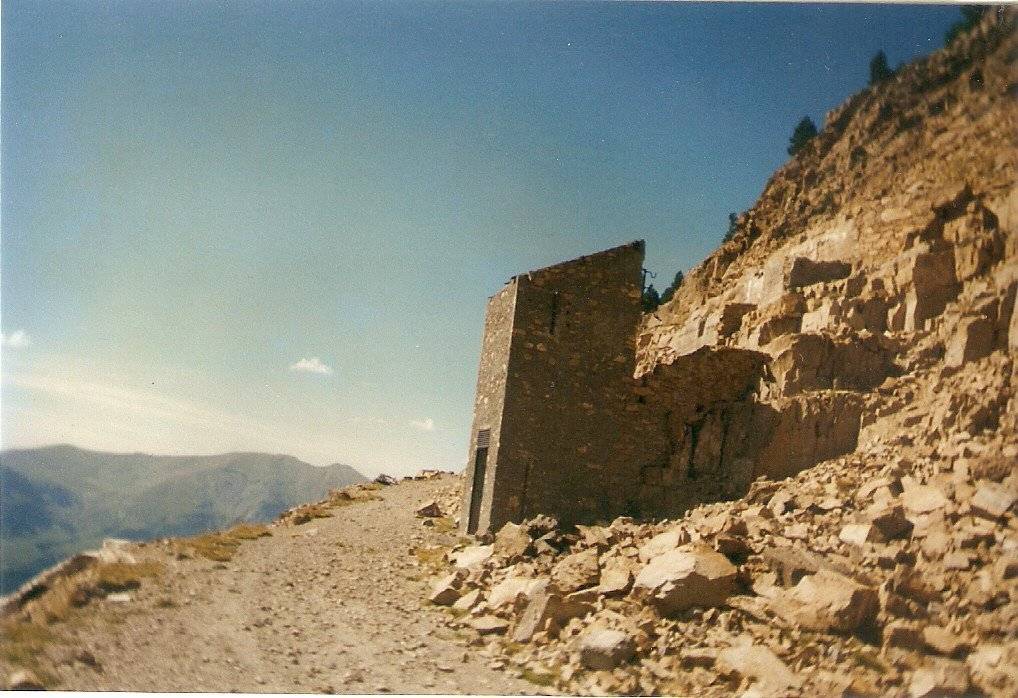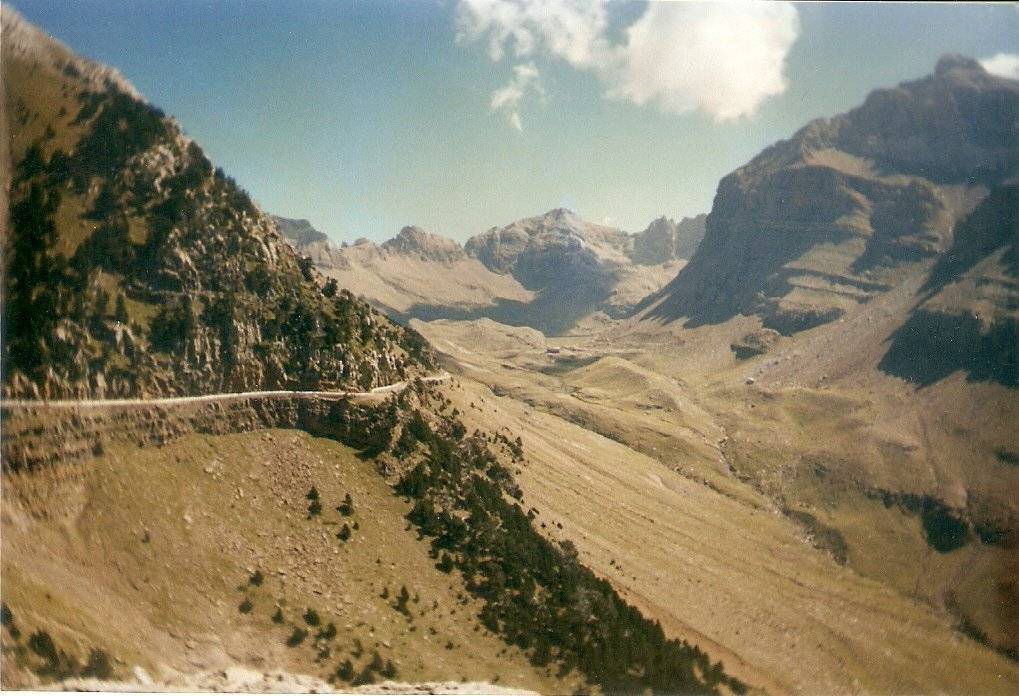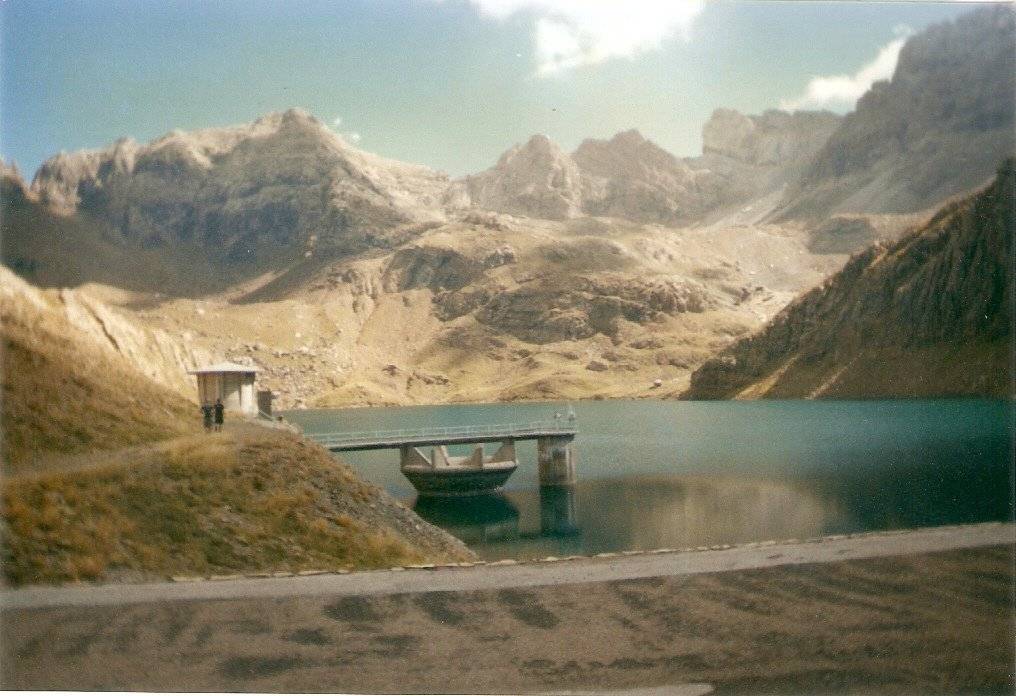When I was visiting my parents a couple of weeks ago, I came across a bunch of old photos from the time before digital photography. They were of a trip I took with some friends almost exactly 17 years ago, so they may have been the last photos I took on actual film.
Just the other day I saw a post by @celestal about abandoned buildings, which inspired me to scan my photos and make this post about our epic journey to a surreal place, back in 2002.
Of course the story starts much longer before that.
Some Bizarre History
Back in the day when railroads were becoming the movers and shakers of commerce and industry, Spain was looking with envy and admiration at France, where a fairly decent rail network had already been built. Seeing the benefits, they wanted to follow the example of their neighbors, but there was one important thing to worry about: What if the French start a military invasion by train, using the Spanish railroads?
To prevent such a fiasco from happening, the clever Spanish engineers decided to implement a different gauge of tracks, meaning that the rails would be slightly further apart, making it impossible for French trains to use them. As a consequence, all goods and passengers needed to switch trains at the border, and such a logistical undertaking needed some serious infrastructure.
Canfranc is a tiny village in the Pyrenees, somewhere halfway between Huesca and Pau. Even today it looks pretty irrelevant, even though it had been discovered by skiing enthusiasts in the later decades. But back in 1912 it must have been even smaller, when construction of this massive transfer station was started. The result was a gorgeous main building in art-nouveau style, and a gigantic installation of over 200 meters of platform.
Today, however, rail gauge is the same all over the EU, and the lines run along the coast anyway, so the Canfranc Station is being reclaimed by the mountains and the forest. But this was the destination that four good friends in Germany decided to visit, seventeen years ago.
Hitchhiking with an Extra Challenge: The Hitching Race
At that time we had found hitchhiking to be a very effective and entertaining means of getting around. Not only did it keep the trip itself entertaining (you never knew what would happen, which way you'd end up taking, where you'd get rained on, etc.), but we met lots of interesting folks who would share interesting stories, or personal insights. We already knew to take it as a charity, so we stocked up on chocolate, dry fruit, and other little gifts to return the favor, and we categorically reject rides that were "going to help us out of pity".
Since there were four of us, we could impossibly hitch together. Three hitchers at once is almost as difficult as one hitcher by himself. So we made teams of two, set out a reasonable destination for a day, and agreed to meet there. Usually it was a town which was small enough to have one central square we could meet, and then make our way to the outskirts on foot, where we'd camp in the woods. Other than that we had no distinct plans. Then the next day we took turns with a different partner. This setup worked surprisingly well, and after a few stops at various French castle ruins, we made it to Canfranc.
From the Station to Ibón de Ip
Arriving at the Station we were immediately awe-struck, but soon got used to the feeling of abandoned tracks and structures. The main building was fenced off, but it was the only inaccessible part of the facility. We went crazy taking photos, many of which my friends used for album covers and such. Eventually, as the evening started to gloom, we found ourselves a comfortable place to crash in one of the buildings.
The next day we decided to explore the area a little. We stashed all our gear in some large tunnels we saw everywhere, running into the mountains, the purpose of which we couldn't figure out, but felt they could be a good hiding place. Then we set out to find the lake indicated as Ibón de Ip on a cartoonish tourist map someone had grabbed somewhere. It was high up in the hills, so we might get a good view, though forget about scale and actual distances on that "map".
It was true, we were not short on good views. Right away the trail took us up-up-up above the town, and we must have ascended from 1000 to 2000 meters, before the hike into the distance actually started. There the whole landscape had changed. Coniferous forests had given way to... well, rocks and more rocks. We found great joy in the sheer surreal feel of the place, but it was around that time that we noticed that nobody had thought about bringing any water!
Okay, now we had a motivation to reach that lake. Looking at the cartoon map and the trail, we made our closest estimate: It's that way, can't be too far. So we started following the trail towards the Mars-like landscape, passing more abandoned structures, and similar tunnels leading into the mountain, as where we hid our stuff.
Finally we thought we saw the lake in the distance, and as we got closer we agreed that it was not just a mirage. Interestingly, it looked like there was a gigantic funnel inserted into it. We put two and two together, and understood the purpose of those tunnels: they were drains. In times of rain or heavy snow-melt, when the lake passed a certain level, the water would pour down those overflow drains, shooting through those tunnels. Ha, perfect place to store our stuff, genius! Good thing rain was the last of our worries.
After a long and strenuous walk we finally reached the lake. Carefully scrutinizing the water, we saw tiny red fish in it, so we decided it was free of deadly chemicals. Not bothering with potentially harmful micro-organisms, we drank to out heart's delights, and then went for swim. Refreshed and revitalized, we set out on our journey back. Amazingly, we made it just before dark set in. We even arrived in time to take advantage of the last ten minutes before the little grocery story closed, to buy some stuff to cook for dinner.
Please check out these great communities I'm contributing to:
Ready to Blog & Earn?
With TravelFeed, easily start your own travel blog and earn as you go. It's the smart platform for travelers who want to profit from their passion. Create a free account
#ecotrain | What is EcoTrain | Discord Community
#tribesteemup |The 8 Pillars of @TribeSteemUp


Don't Forget: Get Travel Health Insurance!
To make your trip a worry-free experience, TravelFeed recommends SafetyWing Nomad Insurance. It provides comprehensive health coverage while you travel, so you can focus on exploring, not the unexpected. Get a quote here
#cyclefeed | Introducing CycleFeed | Discord Community
Travel Resources for your trip to Spain
Recommended by TravelFeed
Flights: We recommend checking Kiwi.com to find the best and cheapest flights to Spain.
Accomodation: Explore the best places to stay in Spain on Booking.com, Agoda and Hostelworld.
Travel Insurance: Medical emergencies abroad can be pricey, but travel health insurance is not. We always use SafetyWing for affordable and reliable coverage.
Car Rental: For hassle-free car hiring, DiscoverCars is our trusted choice with a wide selection of vehicles.
Internet: Got an eSIM compatible phone? Airalo is perfect for reliable internet access during your trip. Just install it before you go, and you're set!
Day Trips & Tours: We recommend GetYourGuide for a variety of well-organized and enjoyable activities.
Travel Planner: Need a hand planning? Our free travel planner chatbot is your personal guide to Spain. Chat now.
Disclosure: Posts on TravelFeed may contain affiliate links. See affiliate disclosure.
